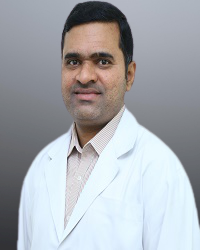Types/Stages of Neurofibromatosis
Neurofibromatosis is broadly classified into three main types:
-
Neurofibromatosis Type 1 (NF1): The most common type, making up a vast majority of cases. It’s chiefly characterised by multiple ‘café au lait’ spots and benign tumours underneath the skin, additionally posing a higher risk of other health problems.
-
Neurofibromatosis Type 2 (NF2): A less common form. Patients with NF2 experience bilateral vestibular schwannomas (VS) and other benign tumours in their brain and spinal cord.
-
Schwannomatosis (SWN): A rare variant characterised by multiple schwannomas which grow on nerve roots and spinal nerves.
Symptoms of Neurofibromatosis
The symptoms associated with neurofibromatosis are diverse, depending on the type and severity of the condition. Some common symptoms include:
-
Café au lait spots are flat, light brown birthmarks that can appear anywhere on the skin
-
Neurofibromas are benign tumours that grow under the skin.
-
Bone deformities caused by tumour growth in the spine can lead to conditions like scoliosis
-
Eye problems like Lisch nodules, cataracts and vision loss.
Tests to Diagnose Neurofibromatosis
Diagnosis of neurofibromatosis is typically achieved through a combination of clinical examination, imaging tests and genetic testing. Some commonly used tests include:
-
Physical examination: This involves looking for café au lait spots and other physical signs of the condition.
-
Imaging tests: X-rays, CT scans and MRIs help identify tumours in the brain, spinal cord and other parts of the body.
-
Genetic testing: Identifies the specific genetic mutation causing the condition.
Treatment or Surgery Options for Neurofibromatosis at Apollo Hospitals in Hyderabad
While there is no cure for neurofibromatosis, a team of highly skilled doctors specialising in neurofibromatosis treatment at Apollo Hospitals can manage symptoms and prevent complications. These include:
-
Medication: The medication is prescribed to shrink the size of a tumour.
-
Surgery: Surgical intervention can be used to remove tumours and alleviate symptoms such as pain and numbness.
-
Monitoring: Regular checkups are crucial for monitoring the progression of the condition and detecting any new symptoms or complications.






 Call Now
Call Now














